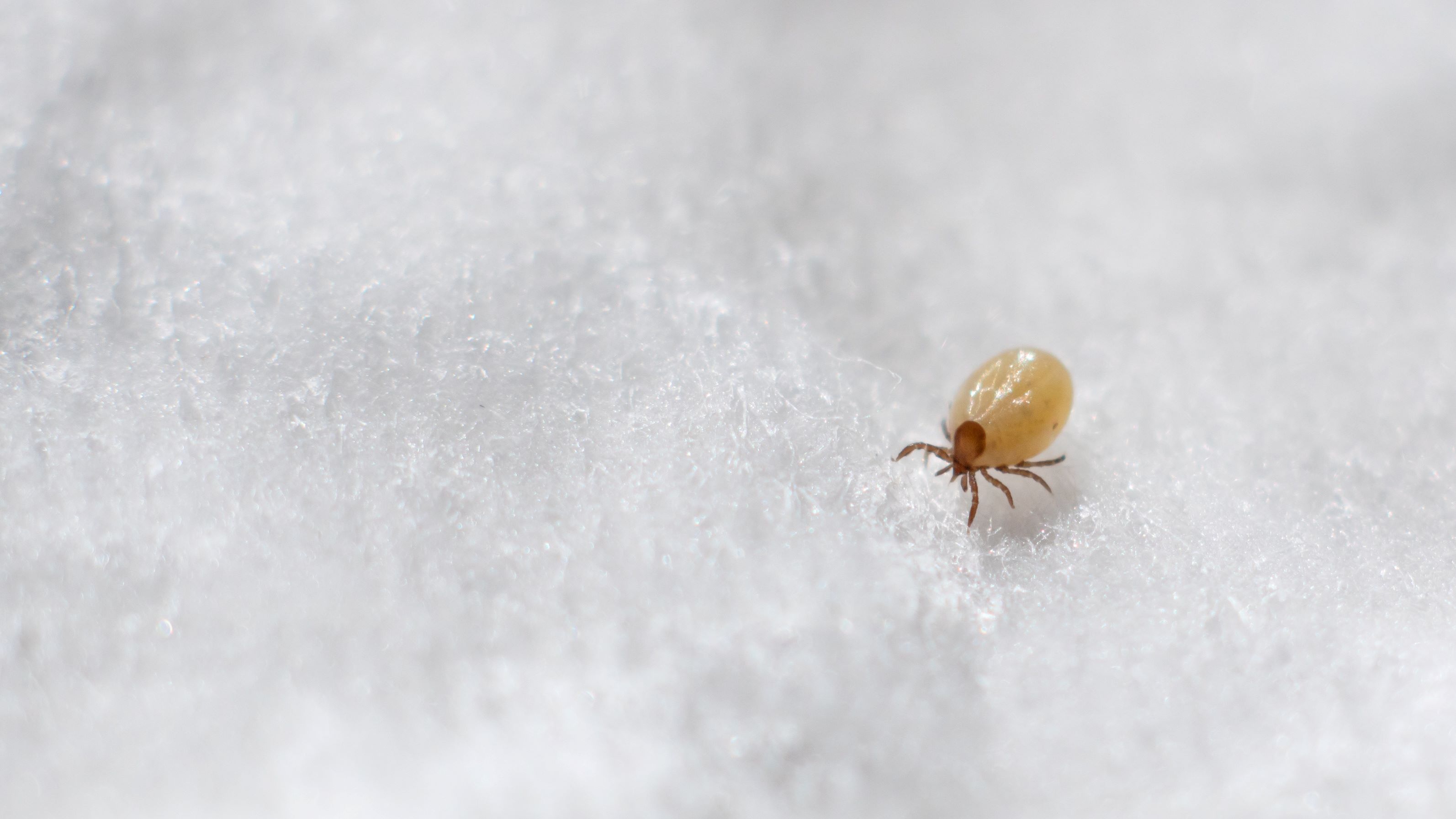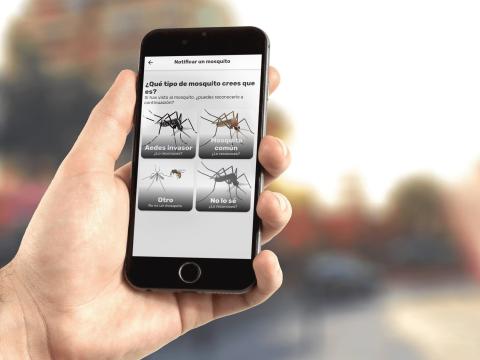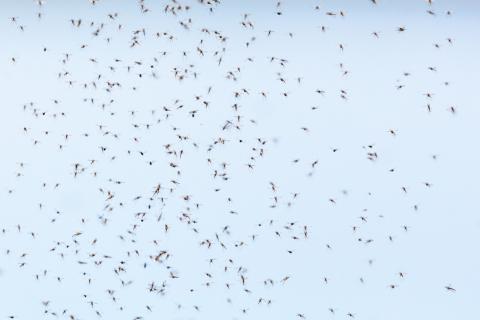What are ticks?
They are parasitic mites—arachnids, not insects—that feed on the blood of mammals and birds. They measure between three and five millimeters, although the size depends on the species, sex, age, and especially if they have recently fed, as these animals can increase their size more than ten times after blood ingestion. Although there are hundreds of species, not all transmit diseases or bite humans.
Last year, a third of the national vector-borne disease plan focused on these mites. The aim was to monitor diseases transmitted by these animals, which had not been done before, through detection, management and control of cases. Among these is Lyme disease, a condition that, although rare, can cause serious complications. At the same time, the aim is to better identify cases of Crimean-Congo haemorrhagic fever, an emerging disease also spread by these arachnids.
Why are they dangerous?
Ticks transmit viruses, bacteria, and protozoa that cause many diseases, some of them very serious and even potentially deadly. These include tularemia, Lyme disease, tick-borne encephalitis, babesiosis, and Crimean-Congo hemorrhagic fever.
From the long list, two diseases are of particular concern in Spain. Lyme disease—due to the lack of data, diagnostic difficulty, and its potential to cause serious sequelae—and Crimean-Congo hemorrhagic fever—due to its severity and status as an emerging disease.
What is Lyme disease?
It is a disease caused by bacteria of the Borrelia genus and transmitted by ticks of the Ixodes genus. It can affect various parts of the body such as the skin, heart, nervous system, joints, and muscles. Its most characteristic sign is the appearance of a bull's-eye rash.
In an informative session about the National Plan for Vector-Borne Diseases held last year, Lucía García San Miguel, head of the Coordination Center for Health Alerts and Emergencies (CCAES), explained that this is the most numerous tick-borne disease and the one with the most impact: “It is not an infection that is cured and that’s it, but over the months, manifestations can continue to appear and it can cause serious and disabling sequelae for life, but it is extremely difficult to diagnose because there are no adequate methods.”
“It is a disease that, if evaluated after having the acute phase, is not easy to diagnose and the diagnoses are indirect with high suspicion, but by no means obvious,” noted the director of the CCAES, Fernando Simón. The difficulty in ensuring that symptoms are caused by Lyme disease has led some forums to use unvalidated diagnostic methods. “Then it is verified that many of the cases are not, but it is very difficult to tell a person with a very disabling condition that they do not have Lyme, especially when they are convinced that they have had it,” Simón added.
What is Crimean-Congo hemorrhagic fever?
It is a disease caused by a virus and transmitted by ticks of the Hyalomma genus. Initial symptoms include fever, dizziness, vomiting, headache, eye and neck pain, and severe pain in the back and legs. Mortality can reach 40%, and unlike Lyme disease—which requires a tick bite—it can be transmitted between people.
In Spain, it is an emerging disease with several cases detected since 2016. “We believe it will increase,” assures García San Miguel, coordinator of the National Plan.
When and where is the risk of tick bites higher?
“In summer, we expect almost all vector-borne diseases because that's when they are most active,” says García San Miguel. “While you are outdoors, remember that ticks are more active from April to September. Ticks are not only in forests but also in parks, gardens, and backyards, wherever you are enjoying football matches or the parties that accompany them,” the guide warns, emphasizing that these mites can transmit diseases that cause serious chronic conditions such as Lyme disease or tick-borne encephalitis (TBE).
In Spain, for now, they are mainly found in rural areas. “In cities, it is rare, and initially, there are no significant risks, but occasionally there may be a case if an animal or hiker brings one,” clarified Simón.
In which parts of Spain is the risk higher?
García San Miguel commented that Lyme disease is mainly concentrated in the north: Asturias and Galicia, but it is also detected in the rest of the autonomous communities. Therefore, the goal from now on “is to monitor throughout Spain.” “We do not have a clear idea of how many cases there are,” she admitted.
The situation is similar with Crimean-Congo hemorrhagic fever: although most cases are focused in Salamanca and Extremadura, it remains to be seen if there is underdetection in other places where cases are not expected.
But are there more ticks than before?
In some parts of Spain, tick bite cases have increased. In the Valencian Community, for example, they multiplied by six in the last five years. Climate change may have played a role, as the season for these mites has extended due to temperatures, and they now appear a month earlier than usual: instead of starting in May, bites begin in April.
Should I take special precautions with dogs?
Contrary to common belief, the risk is not associated with dogs: these animals do not usually suffer bites thanks to the collars they wear, and in any case, the species that transmit Lyme disease and Crimean-Congo hemorrhagic fever do not affect dogs.
How can I reduce the risk?
“We need to go to the countryside protected with long clothing, socks over pants, which in summer is a bit difficult because we wear cooler clothing. It is very important when we get home to check ourselves and each other because sometimes they are in places that are not visible,” summarizes García San Miguel. Repellents can also be used.
Ticks take hours to start feeding, but only then is there a risk of infection: if we find one on our body but it has not ‘latched on’, we can remove it without major concern.
I found an attached tick, what should I do?
García San Miguel explained that in case of a bite, “a blunt-edged tweezer can be used, but it is important to pull it out upwards.” If unsure or unwilling to do it, we should go to a health center.
It is important to avoid other traditional extraction methods (oil, alcohol-soaked cotton, scissors, heat, or even pulling them with fingers) because they can facilitate the transmission of pathogens that the animal might have.
You should never wait for it to detach on its own but remove it as soon as possible, as the risk of infection increases over time. It is also important to save the tick because it can be very helpful for doctors and aid in diagnosis in case of illness. It can be preserved in a jar with damp paper.
I have been bitten by a tick, how do I know if I need to see a doctor?
The risk of developing a disease after a tick bite is minimal, but it is advisable to remain under observation for four weeks in case clinical manifestations appear. In that case, it is necessary to see a doctor—if not already done for the removal of the animal.




